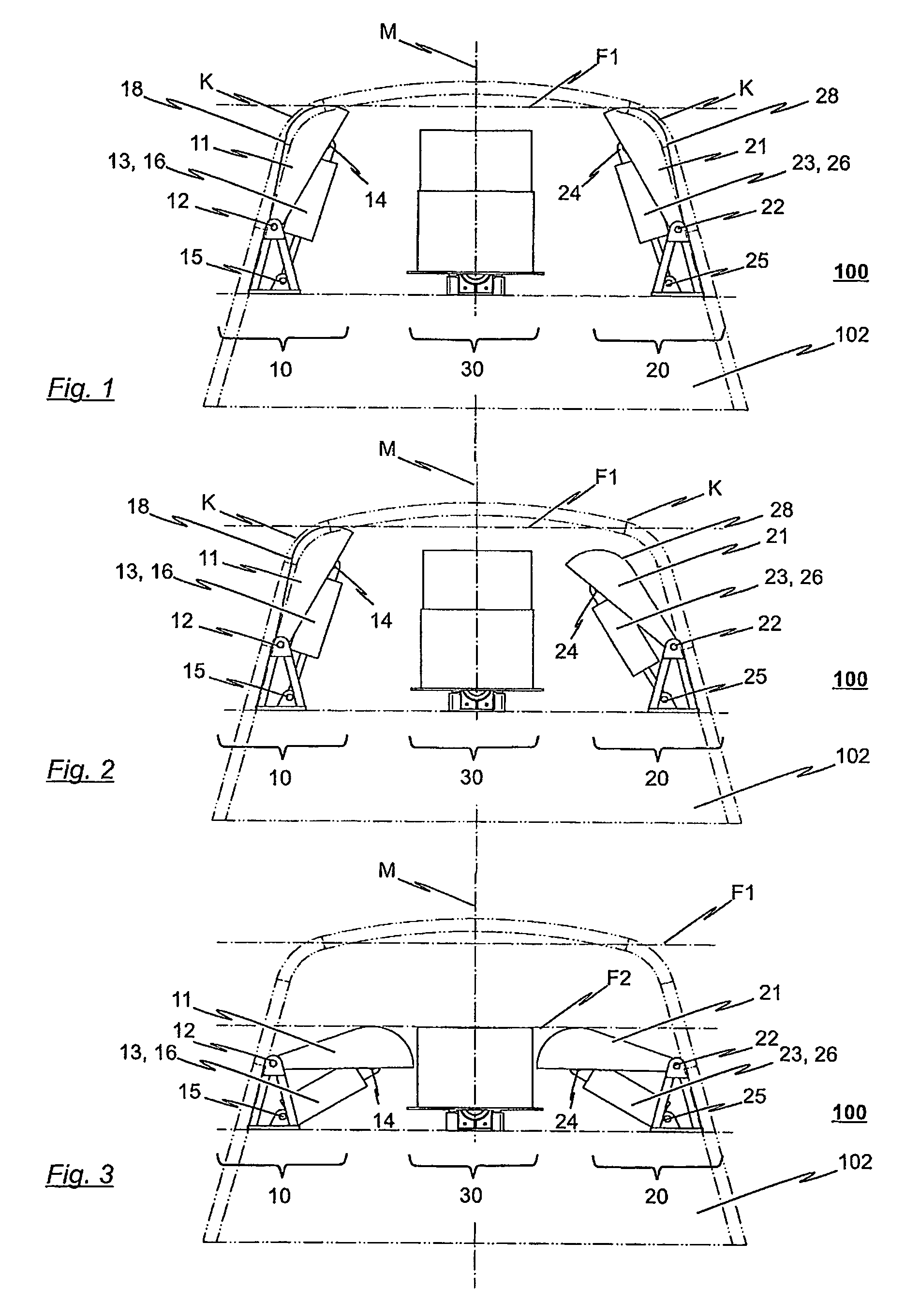Shock absorber for the front or rear region of a railborne vehicle having at least one energy absorption device
a technology of energy absorption device and rear region, which is applied in the direction of bumpers, vehicular safety arrangments, transportation and packaging, etc., can solve the problems of insufficient adaptation to absorb or dissipate, the response of the energy absorption mechanism on the one hand and the sequence of events during energy absorption on the other hand, and the inability of the energy absorption mechanism to absorb full impact energy. , to achieve the effect of preventing the pivoting motion and increasing the impact for
- Summary
- Abstract
- Description
- Claims
- Application Information
AI Technical Summary
Benefits of technology
Problems solved by technology
Method used
Image
Examples
Embodiment Construction
[0061]In the following, the structuring and functioning of a shock absorber 100 provided in the front or rear region of a railborne vehicle and including a first and a second energy absorption device 10, 20, in each case in accordance with a first embodiment of the invention, will first be described by drawing reference to the illustrations provided in FIGS. 1 to 3. The shock absorber 100 is, as depicted, arranged in a front or rear region of a railborne vehicle (not explicitly shown in detail), in particular a streetcar vehicle, and serves to at least partly absorb or dissipate the impact energy occurring upon the vehicle experiencing a frontal and / or side-on collision with an obstacle.
[0062]The energy absorption devices 10, 20 employed in the shock absorber 100 in accordance with the illustrations of FIGS. 1 to 3 are disposed at the front end of the railborne vehicle laterally distanced from the vertical center longitudinal axis M. In detail, a symmetrical arrangement of the two e...
PUM
 Login to View More
Login to View More Abstract
Description
Claims
Application Information
 Login to View More
Login to View More - R&D
- Intellectual Property
- Life Sciences
- Materials
- Tech Scout
- Unparalleled Data Quality
- Higher Quality Content
- 60% Fewer Hallucinations
Browse by: Latest US Patents, China's latest patents, Technical Efficacy Thesaurus, Application Domain, Technology Topic, Popular Technical Reports.
© 2025 PatSnap. All rights reserved.Legal|Privacy policy|Modern Slavery Act Transparency Statement|Sitemap|About US| Contact US: help@patsnap.com



